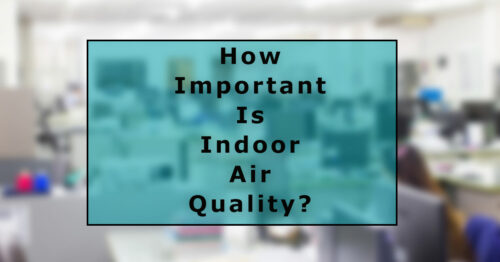Indoor air quality is a longstanding concern for commercial HVAC, especially in healthcare facilities where good air quality and patient comfort is crucial. Photocatalytic oxidation is one option that can be added to an HVAC system for optimal results.
How Important Is Indoor Air Quality
An EPA report estimates that the average American spends 90 percent of their time indoors, and that indoor pollution can be 2-50 times higher than outdoor pollution. That makes indoor air quality more important than ever due to coronavirus in addition to the annual flu season and routine stale air.
Even before COVID-19 and the respiratory droplets that can spread it, contaminants like mold spores, dust, allergens, and other respiratory irritants were a concern for facility managers. This is especially true in office buildings, hospitals, and healthcare facilities which can be notorious for having a sealed environment. The World Health Organization has estimated that indoor air pollution contributed to 2 million deaths.
Inside a building, dirt will build up in ventilation systems if proper maintenance is neglected. When that interacts with moisture from a leak or normal humidity, the resulting biological growth can create significant indoor air quality issues. Ozone from electronics and cleaning supplies also contributes to poor inside air quality.

To address this issue and aid the “ventilation” portion of HVAC, HEPA filters were the first solution, but they only filter to particles 0.3 microns in size. More recently, HVAC UV lights, which are effective against bio-contamination such as viruses, bacteria, and fungal spores, have been adopted as a method for sanitizing air. Now, photocatalytic oxidation is another option for facility managers.
What is Photocatalytic Oxidation for Air Sanitation?
NASA originally developed the photocatalytic oxidation technology. In space, contamination of any kind can have serious consequences. The scientists at NASA realized that photocatalysis is a process similar to, yet the opposite of, photosynthesis. With photocatalytic oxidation ultraviolet light and a catalyzing mineral, such as titanium dioxide, combine to trigger a chemical reaction that breaks down organic matter, pollutants, and volatile organic compounds (VOCs) at the molecular level, leaving water and carbon dioxide as the by-products.
Filtration methods for improving air quality just transfer pollutants into the filter, so regular replacement is necessary. Photocatalytic oxidation is a self-generating process whose components last much longer.
At Donnelly Mechanical, we use ActivePure® Technology, which uses a titanium dioxide honeycomb matrix for effective, efficient catalyzation that destroys both surface and airborne pollutants. The ActivePure® molecules are supercharged by the process to eliminate 99% of the surface and 90% of the airborne contamination, including mold, bacteria, viruses, and fungus spores.
Contact Donnelly to Learn More About Photocatalytic Oxidation & Indoor Air Quality
At Donnelly Mechanical, our expert team has many years of experience in both indoor air quality and commercial HVAC systems. If you want to ensure that your facility maintains excellent indoor air quality or you want to improve your commercial HVAC system, schedule an indoor air quality testing appointment with Donnelly Mechanical. We also have specialized solutions for hospitals, healthcare facilities, rehab facilities, and more. In addition to improved indoor air quality, we can discuss upgraded, high-efficiency HVAC systems that will decrease your energy costs and improve the overall quality of life of the people using your facilities. With more than 30 years of experience, Donnelly Mechanical has NYC’s leading team of experts in commercial HVAC system efficiency. Contact us today!